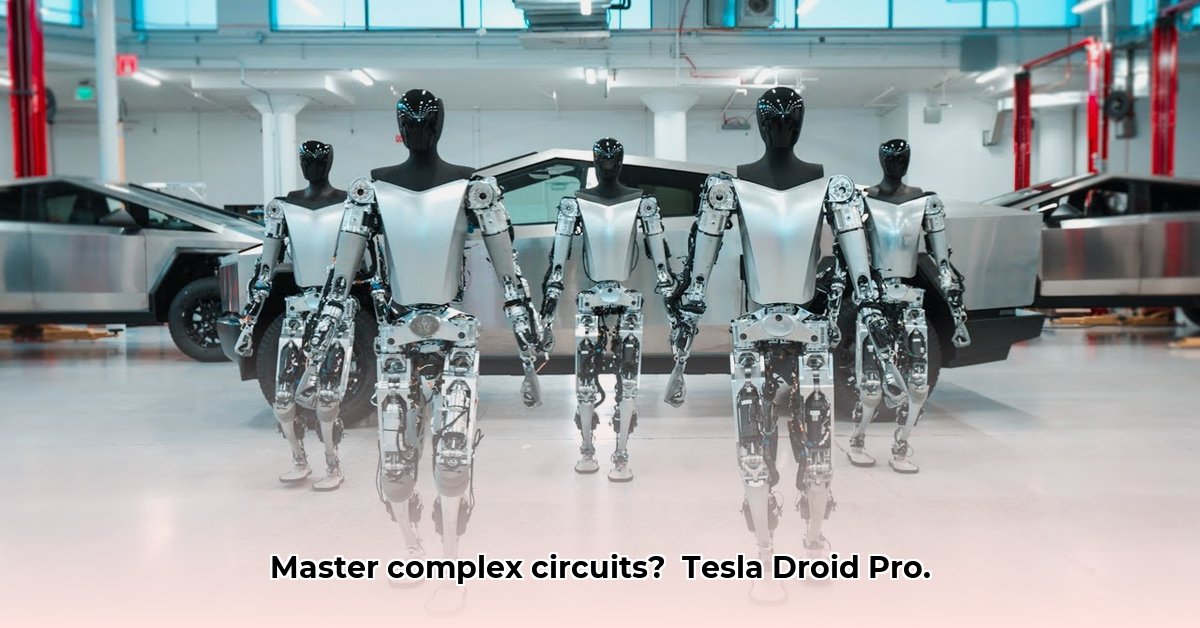
Droid Tesla Pro vs. Demo: A Comparative Review
Choosing the right circuit simulation software can significantly impact productivity and project success. This review offers a detailed comparison of Droid Tesla's Pro and free demo versions, helping students and professionals alike determine which best suits their needs. We’ll analyze features, performance, and potential limitations to provide actionable insights. Key considerations include component libraries, analysis capabilities, and the overall user experience.
Feature Comparison: Pro vs. Demo
Both Droid Tesla versions utilize fundamental electrical engineering principles, such as Kirchhoff's laws and the Newton-Raphson method (a numerical technique for solving equations), for circuit simulation. However, the Pro version offers a substantially enhanced feature set.
Core Similarities
Both versions share a common simulation engine based on established methods like Kirchhoff's laws (governing current and voltage relationships in circuits) and the Trapezoidal integration technique for handling reactive elements (capacitors and inductors). This shared foundation suggests a robust and reliable core simulation capability.
Pro Version Advantages
The Droid Tesla Pro edition distinguishes itself through its vastly expanded component library and advanced measurement tools. The demo version provides a limited selection of basic components; the Pro version adds crucial components, including potentiometers (variable resistors), a wide array of transistors (FETs and JFETs), and more advanced waveform generators. This expansion enables the simulation of far more complex circuits, crucial for advanced projects.
Further enhancing the Pro version is its dual-channel oscilloscope, a sophisticated tool for visualizing and analyzing voltage changes over time. This contrasts sharply with the demo's basic voltmeter and ammeter, significantly impacting analysis capabilities and troubleshooting efficiency. The oscilloscope enables detailed waveform analysis, essential for optimizing circuit designs and identifying potential issues.
Advanced Analysis Capabilities
The Pro version's enhanced measurement capabilities, particularly the oscilloscope, provide a significant advantage for circuit analysis. Visualizing signals, measuring frequencies, and detecting glitches become straightforward, leading to improved circuit design and optimization. The expanded component library complements this, enabling the simulation of complex designs, from 555 timers (common integrated circuits) to intricate digital circuits built using logic gates (AND, OR, NOT, etc.).
Feature Summary Table
| Feature | Droid Tesla Demo | Droid Tesla Pro |
|---|---|---|
| Component Library | Limited | Extensive |
| Waveform Generators | Basic | Multiple (sine, square, triangle, etc.) |
| Measurement Tools | Basic Voltmeter/Ammeter | Dual-channel Oscilloscope |
| Logic Gates | None | Comprehensive range |
| Integrated Circuits | None | 555 timer and others |
| Simulation Complexity | Simple circuits | Complex circuit designs |
Accuracy and Performance Considerations
While both versions use robust numerical methods, the accuracy and speed of simulations warrant consideration. The Pro version might offer higher precision, particularly for complex circuits, although independent verification is needed. Further, simulation speed could vary significantly between versions, especially with large or intricate designs. Future developments may involve implementing the Gear method, potentially improving both speed and accuracy. How does the simulation speed of the Pro version compare to the demo version when simulating large, complex circuits?
Who Should Choose the Pro Version?
The Droid Tesla Pro version caters to professionals and students pursuing advanced studies. Professionals benefit from its enhanced analysis tools and extensive component library for tackling intricate real-world projects. Students find the expanded features invaluable for advanced projects and a deeper understanding of circuit behavior. The demo version serves as an excellent introductory tool for newcomers to circuit simulation.
Risk Assessment and Regulatory Compliance
Users should be aware of potential limitations. The Newton-Raphson method, although widely used, can struggle with convergence in very complex scenarios. Robust error handling is crucial. Moreover, professionals using the software in real-world applications must ensure their work adheres to all relevant safety standards and regulatory requirements.
Actionable Steps: Choosing the Right Version
- Assess your needs: Determine the complexity of circuits you'll be simulating and the level of analysis required.
- Try the demo: Familiarize yourself with the software's interface and basic functionalities.
- Compare features: Carefully review the feature comparison table to identify key differences.
- Consider budget: Evaluate the cost of the Pro version against its benefits.
- Check for updates: Stay informed about future developments and potential improvements.
This comparative review provides a comprehensive analysis of Droid Tesla's Pro and demo versions, enabling informed decision-making for both students and professionals. The choice ultimately hinges on individual needs and the complexity of their circuit simulation projects.
⭐⭐⭐⭐☆ (4.8)
Download via Link 1
Download via Link 2
Last updated: Monday, May 12, 2025